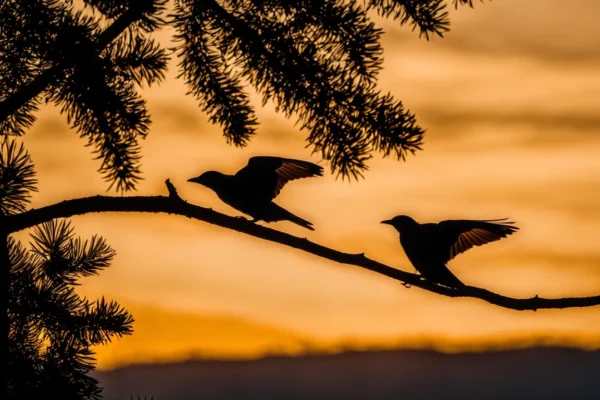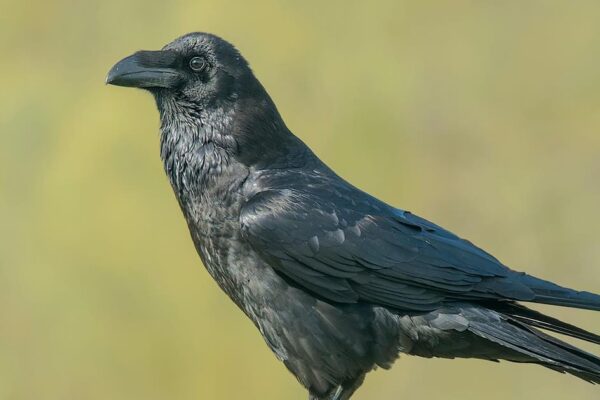Birds can see very well. Predator birds like falcons and eagles have eyesight eight times longer than human eyes, while owls have a unique lens at the rear of their eyes to help them see in the dark. Birds are often hurt or killed when they fly into glass, raising the issue of whether they are able to perceive glass despite having typically better vision than humans.
Since glass is a human innovation, birds are unable to recognize the visual clues that tell their brain that an item is made of glass. In addition to being remarkably keen, birds’ eyesight differs from mammals’ in that they are not able to sense depth in the same manner. Moreover, birds mistake glass reflections of objects like the sky and trees for the actual thing.
Like humans, most animals are not born with the ability to see and comprehend glass; instead, they must be given the opportunity to learn. Given that contemporary glass is likewise quite transparent and that people sometimes trip over it, it seems sensible that birds would make the same error while traveling at a fast speed.
Continue reading to learn more fascinating details about how birds see glass.
What causes birds to fly into windows?
Since most birds appear to be quite aware of their surroundings, we often need to maintain a safe distance while viewing them in the field. A bird will take flight if you approach it too closely because it will see you with its keen eyes. The next time you see a bird, notice how big its eyes are in comparison to its body and, therefore, its brain. This is one of the reasons why birds have such keen eyesight. Birds have huge eyes, but they also have additional adaptations, including extra lenses to reflect more light, and their eyes are densely packed with receptors to improve visual acuity.
In light of the fact that millions of birds are killed each year by flying into windows, it is relevant to ask why birds are so uncoordinated around windows and glass.
There are several justifications. First off, in order to maximize their range of vision, birds often mount their eyes on the side of their heads; nevertheless, this compromises their ability to perceive depth.
The field of vision of each eye overlaps because our eyes look straight ahead, which improves depth perception at the price of our field of vision. This suggests that birds may not be able to discern the depth of glass-filled, three-dimensional buildings.
In addition to seeing and perceiving a greater depth of color than humans, birds also see color more strongly. Because they can see the reflected colors well enough to take it for reality, birds often mistake their reflection for that of another bird. Therefore, it is likely that birds find it realistic when they see reflections of the sky, trees, etc. in windows and glass.
The fact that birds are not exposed to glass in their native habitat—that is, it is not a part of their “curriculum”—may be the most significant contributing factor. If given the opportunity, birds and other animals will acquire the ability to detect glass.
How to prevent birds from swooping into glass
In order to reduce bird deaths and glass damage, glass producers now produce bird-safe glass, which is used outside of tower blocks and other tall buildings. Glass that is safe for birds increases the UV reflection that birds detect, making it easier for them to recognize the glass as a barrier rather than as an extension of their surroundings.
When feasible, use do-it-yourself techniques to black out windows, move plants out of the way of windows, and decorate windows with huge decals or posters. Aside from being popular for new eco-friendly home construction, “birdsavers” are specialty films that are meant to be placed over windows. They also have the added advantage of screening excessive infrared radiation.
Another do-it-yourself technique is to hang zen curtains, which are just pieces of string strung across a window to let birds know that it is off-limits.
How to handle a bird hitting your window
Check the area around the window to see whether the bird is on the ground if you hear or see one hit it. If they’re not too hurt, there’s a good chance they’ll take off right away.
Is the bird hurt or still alive?
The bird may be dead, dazed, or damaged if it is found lying still on the ground. First, look for apparent wounds like fractures or cuts. Get in touch with your neighborhood wildlife hospital if you think the animal may have a broken limb, wing, or other bodily part. The bird may have been shocked or killed by the hit if it seems unharmed but is not moving.
Look for indications of respiration and observe whether the bird’s beak is open to determine if it is stunned or dead. If you place two fingers over its chest, you may also be able to feel its heartbeat. If a bird is not breathing or its heartbeat is not beating strongly, it is not always dead. Stunted birds lose a lot of blood flow to the brain and body. Put it in a box and see if it gets better, or get guidance from a wildlife hospital.
Is the bird in shock?
Birds that have been stunned are effectively knocked unconscious or concussed, and they must be allowed time to heal properly. Put the bird in a warm, dark box with some soft cushioning if you think it’s shocked. It might take a bird stunned two or three hours to recover.
Do birds that collide with windows die?
Many birds do not survive the collision because of the speeds at which they often fly when they strike a window.
Uncertainty surrounds the precise number of birds killed by window impacts annually. One often-cited number is one billion, which comes from a 1990 study published in the Journal of Field Ornithology by biologist Professor Daniel Klem.
According to estimates from the British Trust for Ornithology, almost one-third of the 100 million bird crashes that happen in the UK year are probably lethal.
Even though they are just estimates, they still provide an understanding of the issue, especially in urban areas where some species’ migratory paths cross. Due to migratory patterns, spring is thought to be the deadliest season for bird crashes, and towering structures fare worse than two-story homes.






